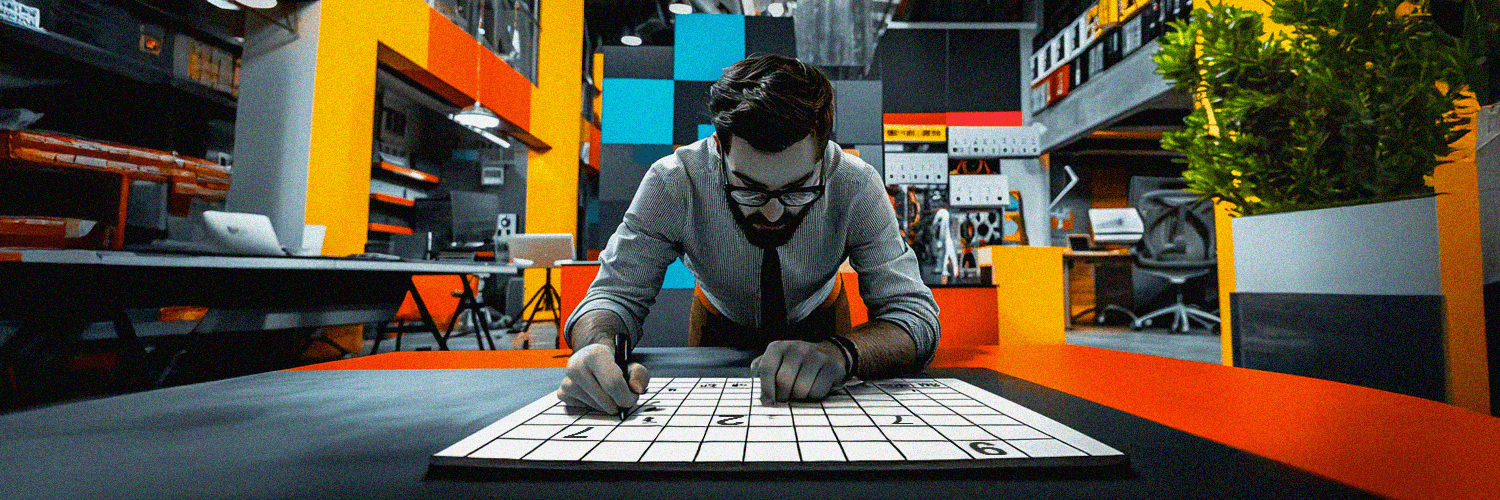First impressions matter. In the realm of business, this holds particularly true. Whether engaging with loyal customers again or meeting potential clients for the first time, how visitors experience your office establishes the foundation for all future interactions with your brand. This initial interaction can significantly influence the development of long-term partnerships or dissuade potential clients. Effectively managing office visitor experiences is critical for success in fostering enduring business relationships. Let's explore strategies to enhance them and propel your organization to tremendous success.
TL;DR:
- Initial interactions with office visitors set the tone for future engagements and can impact long-term relationships.
- Office visitor experience encompasses overall impressions and interactions within a physical workspace, reflecting organizational values and culture.
- Positive visitor experiences build trust, credibility, and loyalty, while poor experiences can harm reputation and deter potential clients.
- Evaluate current visitor experiences to identify strengths and weaknesses, focusing on pain points and areas for improvement.
- Establish specific goals aligned with broader organizational objectives to strategically improve the visitor journey.
- Clearly outline what constitutes an ideal experience, considering both physical and digital interactions.
- Track progress by setting measurable goals, including improvements in satisfaction levels and increased visitor retention rates.
- implement tried-and-tested practices, including clear pre-visit communication, personalized reminders, and streamlined registration processes.
- Regularly measure and evaluate visitor satisfaction, stay updated with emerging technologies, seek inspiration from successful businesses, and pilot new initiatives for ongoing enhancement.
What Is Office Visitor Experience?
Office visitor experience encompasses individuals' overall impression and interaction when entering and engaging with a business or organization's physical workspace. It involves the various touchpoints, from when someone arrives at the office to their departure.This holistic concept includes elements such as the reception area ambiance, the professionalism of the staff, the efficiency of administrative processes, and the overall atmosphere within the office environment.
A positive office visitor experience goes beyond mere aesthetics; it reflects the organization's values, culture, and commitment to excellence. Whether it's a returning client, a potential business partner, or a future employee, a well-crafted office visitor experience contributes significantly to shaping perceptions, fostering positive relationships, and impacting individuals interacting with the business.

Why is Visitor Experience Important for Businesses?
The visitor experience is paramount for businesses due to its profound impact on individuals' perceptions and relationships with a brand. A positive visitor experience sets the stage for building trust, credibility, and a favorable business image. It goes beyond aesthetics, influencing how clients, partners, and prospective customers perceive the organization's values and commitment to excellence.
A well-crafted visitor experience contributes to customer loyalty, positive word-of-mouth, and repeat business. Conversely, a poor or indifferent experience can deter potential clients and harm the business's reputation.
In today's competitive landscape, where customer satisfaction is integral to success, companies recognize that every interaction, from the moment someone steps into the office, plays a crucial role in shaping their overall impression and, consequently, their decision to engage with the brand in the future. Ultimately, prioritizing and optimizing visitor experience is a strategic imperative for businesses aiming to thrive in the long run.
Analyzing Your Current Visitor Experience
Before making any changes, taking a good look at your current visitor experience is crucial. This can show you where you're doing well and, more importantly, where there is room for improvement.
Identifying Pain Points and Areas for Improvement in the Visitor Journey
Identifying pain points along the visitor journey allows you to continually refine your strategies for enhancing office visitor experiences.
Start by observing visitors as they interact with different aspects of your business. Where do they seem confused or frustrated? Are they waiting too long at reception or need help finding their way around?
Furthermore, consider factors that influence the visitor's general perception of your organization, such as cleanliness, temperature control, noise levels, aesthetic appeal of the space, etc. Once you pinpoint these potential issues, address them immediately to enhance your visitors' overall experience.
Conducting Surveys and Interviews with Visitors to Gather Feedback
Direct feedback from visitors offers valuable insights into their experiences. One reliable method to gather this information is through surveys and interviews.
Design concise questionnaires focusing on areas like arrival process efficiency, staff responsiveness, amenities quality - even exit experience matters! Consider conducting face-to-face exit interviews if time permits; hearing about visitor management strategies that worked (or didn't) can reveal incredible insights.
Remember to communicate why you're asking for feedback clearly; help them understand it ultimately contributes to making improvements tailored to their preferences. Nothing sparks interest quite like being part of positive change!
Analyzing Data and Metrics Related to Visitor Satisfaction and Engagement
Feedback isn't just words - numbers speak volumes too! Usage data and statistical analytics related to visitor engagement provide functional patterns when appropriately understood.
Metrics such as visit duration or repeat visits yield knowledge regarding loyalty drivers among your audience. More specific aspects like peak visiting times can provide context regarding infrastructure capabilities during rush hours.
Consider working with a visitor management system that offers data analytics features. Such visitor management technologies facilitate data-driven decision-making, enabling you to optimize operations based on quantifiable insights rather than mere assumptions.
Establishing Clear Objectives for Improving Visitor Experience
To create a positive and impactful visitor experience, businesses must set clear objectives that align with their overall goals. This pivotal step involves identifying specific outcomes and milestones for enhancing the visitor journey within the office space. By establishing well-defined objectives, organizations can strategically direct their efforts, ensuring that improvements in visitor experience contribute directly to broader success metrics and long-term business growth.
Defining what a Great Visitor Experience Means for Your Business
The first step towards enhancing your office visitor's encounter centers around defining what an ideal visitor experience looks like within the context of your business. This might differ across industries and individual companies, but several common factors typically play a crucial role.
User-facing elements like helpful staff, straightforward navigation, accessible amenities, and swift check-in procedures often count towards positive impressions. However, other factors are more abstract yet just as crucial; these include a sense of being welcomed, valued, and considered throughout their visit.
Remember that defining 'visitor experience' applies not only to physical aspects but also to digital experiences. For example, ease of navigating your company's website or app could also significantly impact this definition.
Setting Measurable Goals and Targets for Enhancing Visitor Satisfaction and Retention
After you've defined what an exceptional visitor experience should look like for your organization, the next logical step involves establishing achievable goals while keeping track of progress.
One fundamental target revolves around improving visitor satisfaction levels. You can measure these through tools such as post-visit surveys or analyzing positive vs negative feedback from visitors. The tracked data will provide qualitative insight into what's working well and where changes may be beneficial within your current setup.
Another strategic objective worth underlining would be increasing visitor retention rate - but how do we quantify this? A simple yet effective method involves monitoring returning visitors across given periods. Seeing more frequent repeat visits indicates successful measures taken towards improving visitors' experiences overall.
By dedicating resources to establishing concrete goals focused on improving visitor satisfaction and retention, you lay down a firm foundation upon which continuous improvement in visitor management strategies can build.

Best Practices for Great Office Visitor Experience
Following these tried-and-tested best practices is paramount for the great office visitor experience.
Improving Pre-Visit Communication Through Clear and Informative Website Content
Your website acts as the first point of contact for potential visitors. Furnishing it with informative content can significantly enrich your office visitor experience. Ensure each page has relevant information about the offerings, location details, operating hours, and any special instructions for their visit.
Short and vivid descriptions build anticipation and create a sense of familiarity for visitors before they arrive at your office. This turns your website into a crucial visitor management tool.
Offering Personalized Email or Text Reminders to Enhance Anticipation for The Visit
Isn't it delightful to receive emails or texts personalized just for you? Indeed! That's precisely how your visitors would feel, too!
Sending reminders before scheduled visits keeps engagement alive and prevents no-shows. Include essential checklists or insider tips in these reminders to prepare visitors for what to expect. Keep in mind that each touchpoint contributes to the overall visitor experience.
Implementing a Seamless Visitor Pre-Registration Process
When host employees pre-register visitors before their arrival, it streamlines the check-in process, saving time and minimizing delays. This efficiency reflects positively on the organization's professionalism and ensures a smoother and more welcoming experience for visitors. Additionally, pre-registration allows hosts to anticipate visitor needs, tailor their reception, and provide a more personalized welcome, contributing to an overall positive impression and setting the stage for a successful interaction.
Simplifying Registration or Check-In Processes With Digital Visitor Management Systems
To improve the office visitor experience, addressing the issue of long queues at receptions is crucial. Simplifying registration and check-in processes is critical, and this can be efficiently achieved by adopting visitor management system powered by smart applications like YAROOMS Digital Reception. These modern tools capture visitor data and enable front office staff to focus on serving visitors rather than managing paperwork and queues. This streamlined approach enhances efficiency and contributes to a more positive and seamless experience for everyone involved.
Offering Amenities such as Clean Restrooms, Comfortable Seating Areas, and Wi-Fi Access
Attention to detail can significantly impact the visitor experience. The provision of amenities is a tangible indicator of the meticulous care taken to ensure a positive impression. As part of your strategy, consider fundamental elements such as well-maintained restrooms, comfortable seating for potential wait times, and complimentary Wi-Fi access—because who can resist free internet? By prioritizing these small but significant details, you are shaping the office visitor experience into a memorable event for all the right reasons.
Proactive Staff Training for Enhanced Visitor Engagement
A crucial element of any strategy aimed at improving visitor experiences resides in the hands of your team. As they act as extensions of your organization's brand, it becomes paramount to instill an understanding of their role and its impact on visitor experience within them.
Educating Staff Members on the Importance of Visitor Experience and Their Role in Delivering It
With a clear definition and understanding of visitor experience, employees may find it easier to handle visitors efficiently. Regular training sessions highlighting the importance of providing a stellar visitor experience and how employees directly contribute can be pivotal.
Discuss with staff members various aspects such as:
- The significance attached to first impressions
- How empathetic interactions can enhance the overall visitor experience
- Their contribution towards building or tarnishing brand reputation
Layered learning methodologies incorporating audio-visual aids, workshops, simulations, and real-life examples can help staff better grasp these concepts.
Training Staff To Be Attentive, Approachable, And Knowledgeable About The Exhibits Or Services
Next up is building the necessary skill sets. Training should focus not just on the products or services the business offers but also on practical communication skills development.
Approachable and attentive employees tend to make visitors feel more welcome and valued.
Here are some areas that are worth focusing on during training:
- Mastery of product/service knowledge
- Learning decentralization – empowering every employee to answer basic queries about all exhibits/services
- Active listening skills
- Practical implementation during role-plays
The goal here is to foster a proactive information dispensing system rather than reactive responses upon receiving inquiries from visitors.
Empowering Front Desk Staff To Handle Visitor Complaints Or Inquiries Promptly And Professionally
The front desk is often where critical engagements occur between your office and your visitors; consider this place as your organization's nerve center! Equipping these employees with the right tools, training, and accessibility to information can significantly improve your office visitor experience.
Focus on:
- Developing practical complaint resolution skills
- Creating an easy-to-navigate knowledge base that staff can refer to for quick solutions
- Inculcating a mindset of 'patience and politeness'
- Emphasize maintaining professionalism under all conditions
Remember, a well-trained front desk employee is your first defense against unhappy visitors. Their capability to turn such situations around will dictate further visitor management strategies.
Measuring and Evaluating Visitor Experience
A critical part of improving the office visitor experience revolves around measuring and evaluating your current practices. Through thorough evaluation, you can truly gauge what's working, what isn't, and where to point your efforts next.
Implementing Feedback Mechanisms Such as Surveys or Feedback Kiosks to Gather Visitor Opinions
One of the most powerful tools in your arsenal for assessing visitor experiences involves implementing proper feedback mechanisms. Asking visitors about their experience can provide invaluable insights that quantitative data might fail to capture.
Surveys are relatively easy to distribute (and digitally collect) after a visit, making them a convenient choice for both parties. When designing these surveys, remember to balance out open-ended queries with targeted closed questions; this combo will give you specific areas for improvement while providing room for unexpected observations.
Feedback kiosks are another available resource—placed strategically at exits or critical touch-points within offices; these self-service devices prompt guests to rate specific aspects of their visit.
Analyzing Visitor Satisfaction Scores, Ratings, and Comments to Identify Areas for Improvement
Once feedback starts pouring in from different sources, it's time for analysis. Examining office visitor satisfaction scores, ratings, and comments is a crucial step in identifying areas for improvement. These quantitative and qualitative insights provide valuable feedback on the overall visitor experience.
By carefully analyzing satisfaction scores, businesses can pinpoint specific strengths and weaknesses. Ratings and comments offer nuanced perspectives, shedding light on aspects that may go unnoticed. This data-driven approach allows organizations to make informed decisions and implement targeted enhancements, ensuring that the office environment evolves to meet and exceed visitor expectations.
Regularly Reviewing and Adjusting Strategies Based on Visitor Feedback and Industry Trends
Refining the visitor experience is not a one-off project but an ongoing process. Regular reviews of feedback and continual adjustments are integral.
The valuable data you collect will only significantly impact if converted into actionable changes. Recognize patterns over time, collate them with the evolving industry trends in office visitor management strategies, and modify your approach as needed. In response to one-time incidents or dispositional factors affecting certain visitors, offer personalized solutions rather than broad-based changes.
Make it a point to communicate these updates to the visiting individuals—this forms part of their journey with you and continually reinforces your commitment to providing superior visitor experiences.
Ultimately, there's no end point to this ‘how to improve visitor experience’ quest—it’s a constant journey underpinned by caring about those who step through your office doors daily. From collecting feedback to making informed adjustments—all your efforts pay off eventually in the form of positive office visitor experience.

Continuously Evolving and Innovating Visitor Experience
To maintain excellence, even in the face of ever-evolving consumer expectations, we should constantly look for fresh ways to innovate. This cycle of evolution propels continuous improvements to the visitor experience.
Staying Updated With Emerging Technologies and Trends in Visitor Management
Technology advancements continually redefine how businesses operate, making it essential for organizations to stay informed about the latest trends and innovations in visitor management. To improve visitor experience, you can leverage technologies such as facial recognition or QR code scanning for effortless check-ins or utilize virtual tour guides to enhance interaction.
Furthermore, staying aware of emerging trends—such as hyper-personalization—enables you to meet and exceed visitors' expectations. Remember, today's tech-savvy consumers appreciate being involved with visitations tailored to their interests and needs.
Seeking Inspiration From Other Successful Businesses
A practical approach to enhancing office visitor experiences involves learning from successful businesses. Study their visitor management techniques, including the welcome process, staff training, and pre-visit communication. Identify unique amenities they offer to create a more comfortable environment for visitors. Explore how they use advanced technologies to simplify registration and improve wayfinding within their premises.
Rather than simply copying these companies, extract insights that align with your business operations. Adapt these insights to fit well with your objectives and brand identity.
Piloting New Initiatives or Experiences To Test Their Impact on Visitor Satisfaction
To assess the effectiveness of new initiatives and minimize potential negative impacts on existing systems, consider testing them before full deployment. For example, you could experiment with practices such as providing personalized digital greetings during visitor check-ins or installing feedback kiosks at various points in your premises to gather visitor opinions promptly.
Start by testing these initiatives on a small scale and collect relevant data to determine whether visitors appreciate the changes. Keep in mind that feedback, whether positive or negative, is crucial for understanding how to enhance the visitor experience meaningfully.
These adjustments will help you stay ahead of visitor expectations and quickly adapt to evolving market requirements in visitor management strategies. Successful innovation in this area can build a remarkable reputation for delivering superior visitor experiences.
Wrapping Up
In your quest to enhance the visitor experience, recognize the significant impact of first impressions, especially in an office setting where each touchpoint matters. Continued refinement of your visitors' journey relies heavily on maintaining up-to-date and innovative strategies. Stay informed about emerging tech trends in visitor management techniques, and draw inspiration from successful businesses for valuable insights.
However, not every trend is universally applicable. Therefore, before fully embracing any new initiative or strategy aimed at improving visitor experiences, it's advisable to conduct a trial. Piloting these elements allows you to gather first hand feedback on their effectiveness before widespread implementation.
In summary, the holistic improvement of the office visitor experience involves effective pre-arrival communication with potential visitors, active staff training to prioritize customer service, ongoing measurement of progress through feedback or metrics, and continuous evolution of your approach. Focus on cultivating visitor loyalty by ensuring hassle-free and enjoyable interactions at every stage—this is the essence of delivering stellar office visitor experiences.












